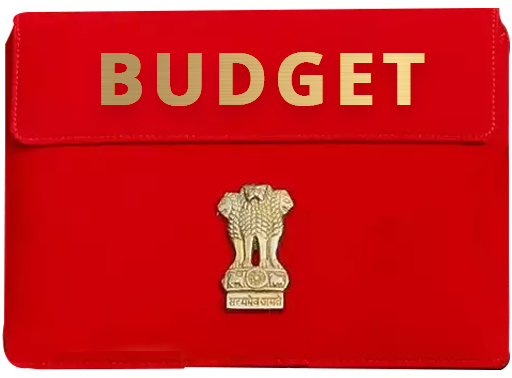- Understand Surrender Value
- Calculate Your Surrender Value
- Types of Policy Surrender Value

Simran is an insurance expert with more than 4 years of experience in the industry. An expert with previous experience in BFSI, Ed-tech, and insurance, she proactively helps her readers stay on par with all the latest Insurance industry developments.
Reviewed By:

Priya has been in the content writing industry for over 9 years. She has been religiously following the insurance sector since the start of her career which makes her an avid insurance expert. Her forte lies in health, term, and life insurance writing, along with her knowledge of the latest developments in the insurance sector.
Updated on Sep 28, 2023 6 min read




Surrender Value in Life Insurance: Overview
A life insurance plan is a long-term investment and commitment for insurance holders. Due to certain circumstances, sometimes policyholders are unable to continue their life insurance plan and have to surrender the life insurance policy which means terminating their policy before it reaches maturity. In case a policyholder opts to surrender their life insurance policy, a life insurance provider offers a surrender value at the time of surrender. In this article, we will talk about how life insurance surrender value is calculated, its types, and which kind of policies can be surrendered before they reach maturity.
Surrender Value: Definition
In literary terms, a surrender value in insurance denotes the amount which the insurance company will pay you, as a policyholder when you decide to surrender the life insurance policy. Usually, this is a big misconception among customers before purchasing a policy that they will be stuck with their life insurance policy forever if purchased. However, as per IRDAI life insurance plans in India offer you the option of surrendering your policy. The charges imposed while surrendering a policy may vary depending on your policy.
Should anyone choose to surrender their policy, mid-way through the policy term, they will not receive the maturity amount, instead, they will receive a portion of the sum assured, which is referred to as the surrender value of the policy. From the 3rd year after the commencement of the policy, the surrender value is up to 30% of the paid premium and increases subsequently after the third year.
Types of Policy Surrender Value
There are 2 types of surrender values that policyholders may come across when purchasing a life insurance policy:
- Guaranteed Surrender value
- Special Surrender Value
Guaranteed Surrender value |
Special Surrender Value |
|---|---|
| This value is typically stated in the policy documents. | The special surrender value gets calculated in case the insured individual stops paying premiums but the plan continues until they opt to surrender it. |
| Insured individuals are eligible to receive this surrender value if they have paid premiums for 3 consecutive years. | After the premium payments stop the sum assured will decrease and the lower amount will be known as the paid-up value. |
| The surrender amount is equal to all the premiums paid so far, excluding the first premium amount and the premium amount paid to avail additional riders/benefits. | In order to calculate the special surrender value, you need to know your surrender value factor. The number remains 0 for the first 3 years and then increases every subsequent year. |
| When the guaranteed surrender value is paid, no additional bonus will be provided that you may have qualified for at the time of policy maturity. | If an individual stops paying premiums from the 4th year we assume a surrender value of 30%. Additionally, in the 4 years, you earn a bonus of INR 30,000. |
| The Guaranteed Surrender Value is calculated by multiplying the total premiums paid by the surrender value factor (the percentage of total premiums paid) | Special Surrender Value=(Paid-Up Value + Bonus) x Surrender Value Factor |
| Example- Suppose Mr. Sharma has paid a total of INR 70,000 in premium up to the date and the surrender value factor is 40%, then guaranteed surrender value will be 70,000x40%=28000 | Example- Suppose Mr. Sharma has bought a policy whose premium is INR 20,000 per year for 10 years providing coverage of Rs 4,00,000. He stops paying premiums after 4 years. A bonus of INR 30,000 is earned over four years and the surrender value factor is 30%. Paid-up capital=4,00,000x 4/10=INR 1,60,000 (2,00,000+30,000)x 30%=INR 69,000 |
Insurance providers offer two kinds of surrender values as we mentioned earlier. Wherein, the guaranteed surrender value is a regulatory requirement. Usually, the guaranteed surrender value is a fixed percentage of your premiums between 30-35% of all the premiums paid minus the first year's premium. Whereas, the non-guaranteed surrender value is calculated by keeping in mind various factors like sum assured, bonus, policy tenure, and the number of premiums paid.
Do All Life Insurance Policies Offer Surrender Value?
When purchasing a life insurance policy it is essential to understand the terms and conditions thoroughly as not all insurance policies will provide you with a surrender value. Usually, term insurance plans have no surrender value benefit, however, investing in Life insurance plans like ULIPs and endowment plans will provide you with a surrender value in life insurance.
Factors Considered While Calculating Surrender Value
Surrender Value is calculated including various factors by the insurance providers. The most common factors considered while calculating the surrender amount are mentioned below
- Policy Term - Insurance holders opting for a longer policy term are more likely to receive a higher surrender value.
- Higher Premiums Paid - When insurance holders pay a higher premium the surrender value calculated would be higher.
- Insured Individual's Age - If you purchase a life insurance policy at a younger age there is a chance of availing a higher surrender value.
- Surrender charges imposed by insurance company- The surrender charges imposed by the insurer affect the surrender value. More will be the charges imposed, less will be the surrender value an insured will get.
Reasons Policyholders Surrender Their Policy
There are various reasons to surrender a policy that are discussed below:
- Found a More Suitable Option
Many times, even after doing thorough market research an insured individual might come across a life insurance policy that they feel is more suitable for their needs and requirements and can fulfill their financial goals. Even though with increasing age, premiums increase for a life insurance policy, the most common reason for a life insurance policy surrender is because individuals got a better sum assured, better benefits, and bonus amount through some other policy. - Financial Emergency
Many times, due to financial emergencies and financial crunch an insured individual might have to surrender their existing life insurance policy. Extra monthly expenditures might lead to the inability to pay life insurance premiums leading to giving up the policy. - Require Additional Funds
When an insurance holder requires liquid cash and does not have it readily available, some individuals may look at surrendering their life insurance policy in order to receive the surrender amount aiding in their need for liquid cash requirement.
Conclusion
A surrender value offers the liberty to the insurance holder to exit the policy in case they are unable to commit to the life insurance policy tenure. The surrender value or surrender amount will be provided to you on the basis of calculations made by your insurance provider. However, once you have surrendered your policy the benefits associated with the policy will no longer be valid. Coverage for financial funds in case of your demise, or maturity benefits of your investments will be null and void. It is essential to make an informed decision before surrendering your policy.
Surrender Value in Life Insurance: FAQs
1. What is the meaning of surrender value in life insurance?
The surrender value can be understood with the example mentioned here. Let& 039;s suppose Mr. Amit purchases a life insurance policy worth 1 Crore and after paying premiums for 3 consecutive years he decides to surrender his policy. If the premiums paid during these years amount to INR 25,000 the insurer will pay the entire total of the premiums of INR 25,000 excluding the charges applied by the insurer such as surrender value charge.
2. What is the formula used to calculate the Surrender Amount?
The surrender value is calculated as per the formulas provided below: Guaranteed Surrender Value=Total Premiums x surrender value factor (the percentage of total premiums paid) Special Surrender Value=(Paid Up Value + Bonus) x Surrender Value Factor
3. Who pays the surrender amount to the insurance holder?
The insurance provider pays the policy surrender value to the life insured after they decide to surrender the insurance policy.
4. Will I receive a surrender amount with tax benefits?
No, surrender value does not offer tax benefits to insured individuals.
5. How can I get full surrender value and avoid surrender charges levied by the insurance providers?
In order to avail full surrender value it is essential that you pay your life insurance policy premiums duly for 5 consecutive years in order to avoid surrender charges.
6. What is a cash surrender value?
Cash surrender value is the definite amount received by the policyholder after the termination of the life insurance policy either before the maturity period or death of the policyholder. Generally, this amount is paid in a lump sum.
Life Insurance Companies
Share your Valuable Feedback
4.6
Rated by 855 customers
Was the Information Helpful?
Select Your Rating
We would like to hear from you
Let us know about your experience or any feedback that might help us serve you better in future.


Written By: Simran Kaur Vij
Simran is an insurance expert with more than 4 years of experience in the industry. An expert with previous experience in BFSI, Ed-tech, and insurance, she proactively helps her readers stay on par with all the latest Insurance industry developments.






 Reviewed By: Anchita Bhattacharyya
Reviewed By: Anchita Bhattacharyya
















Do you have any thoughts you’d like to share?